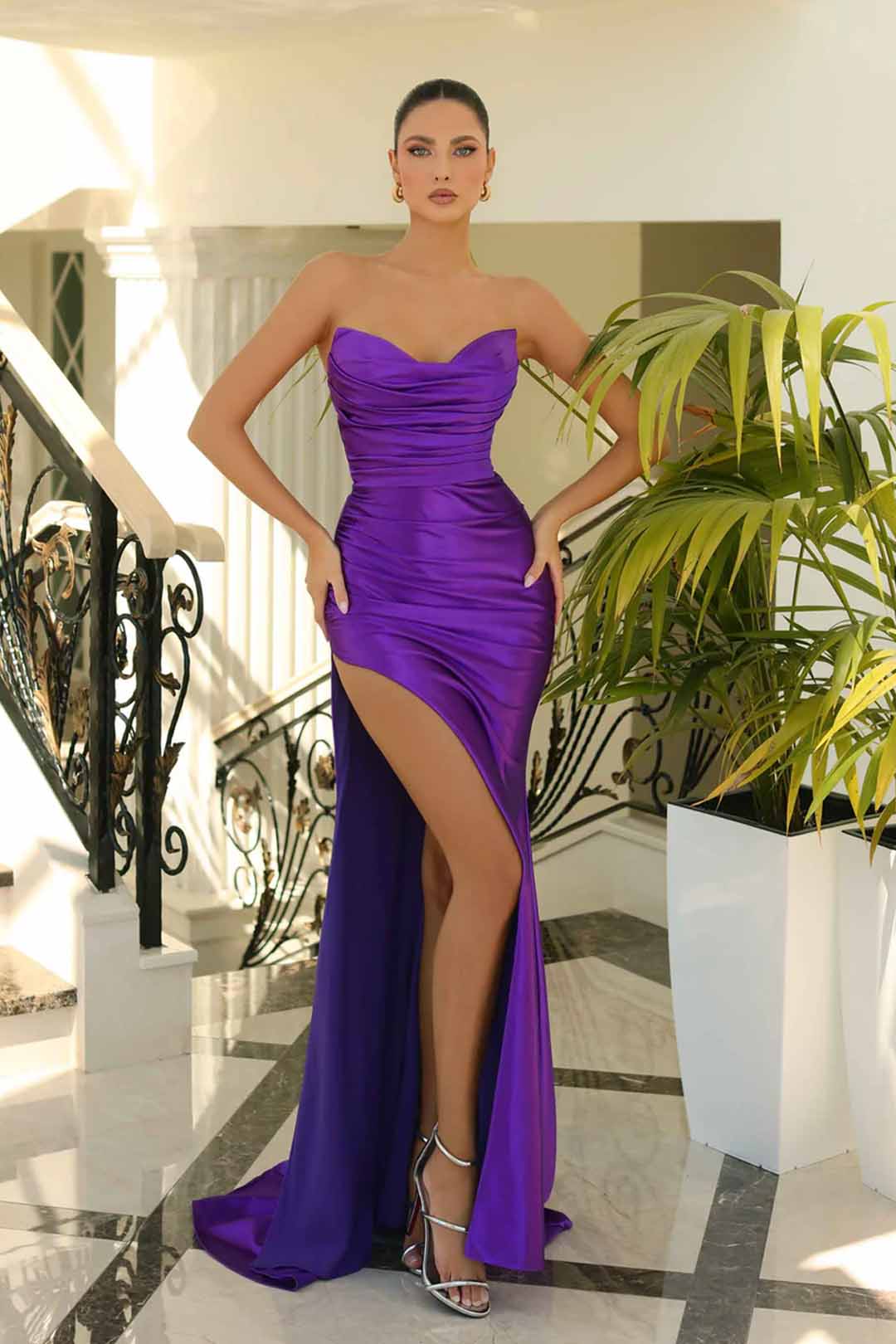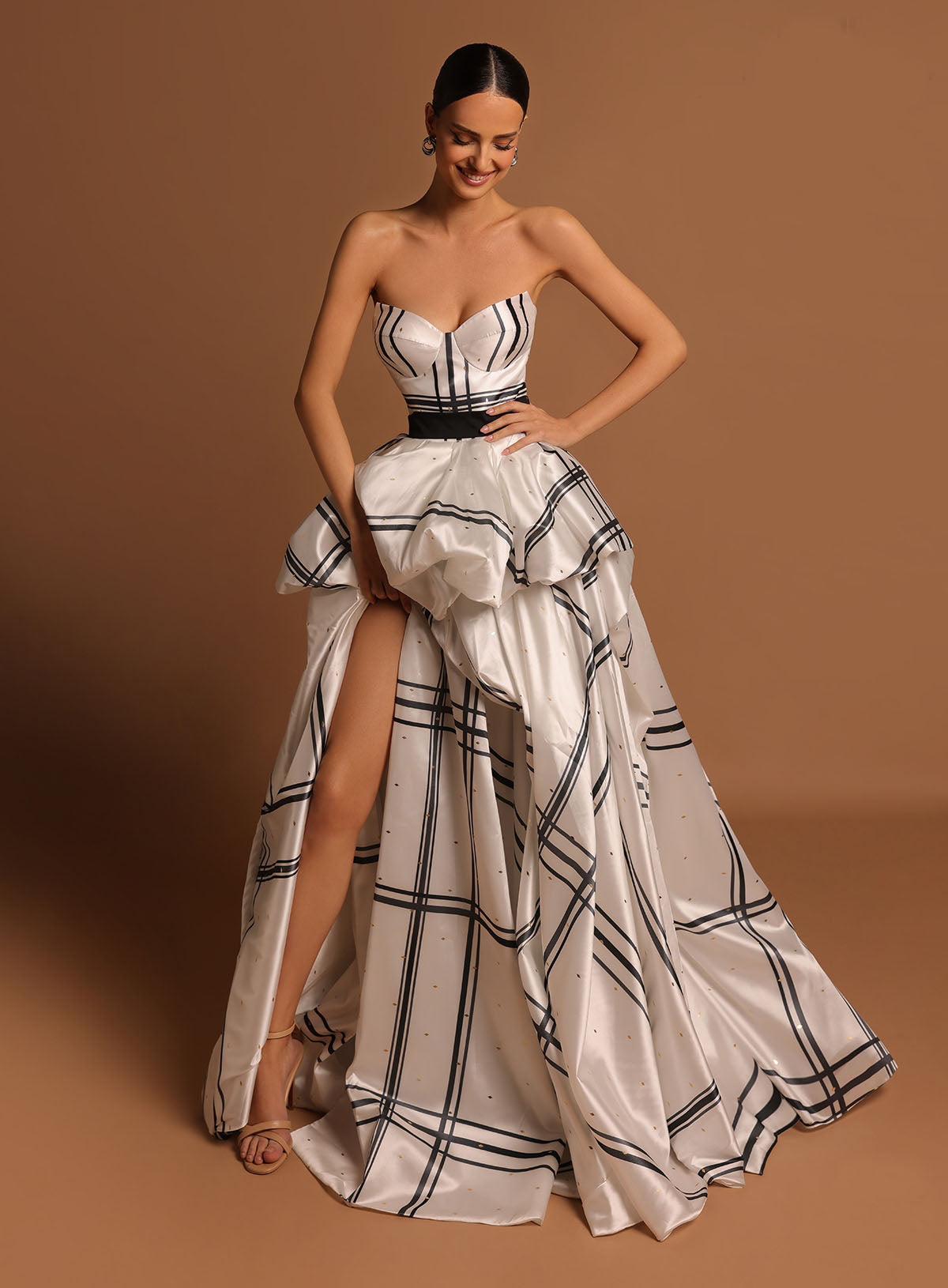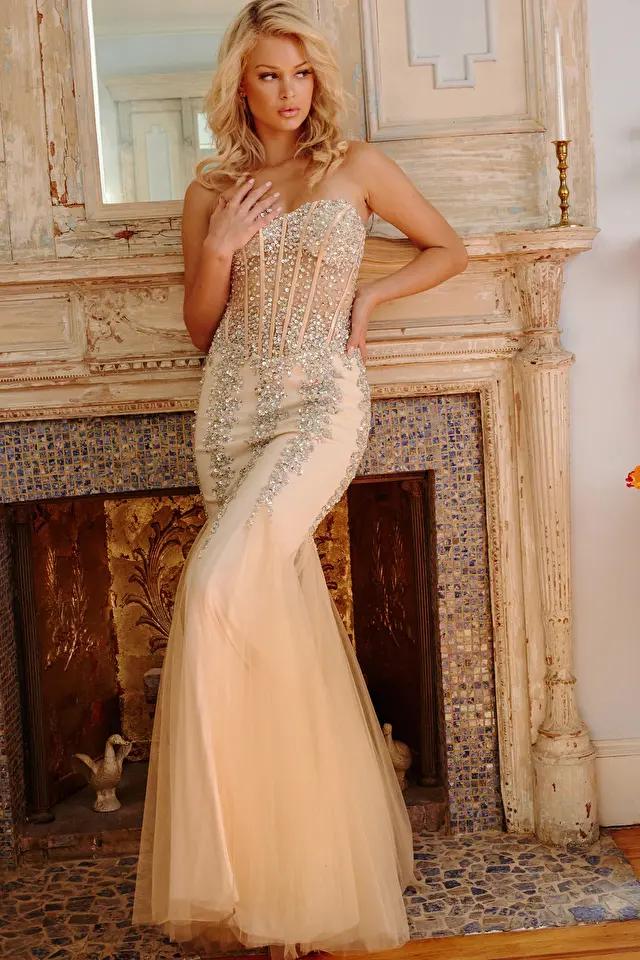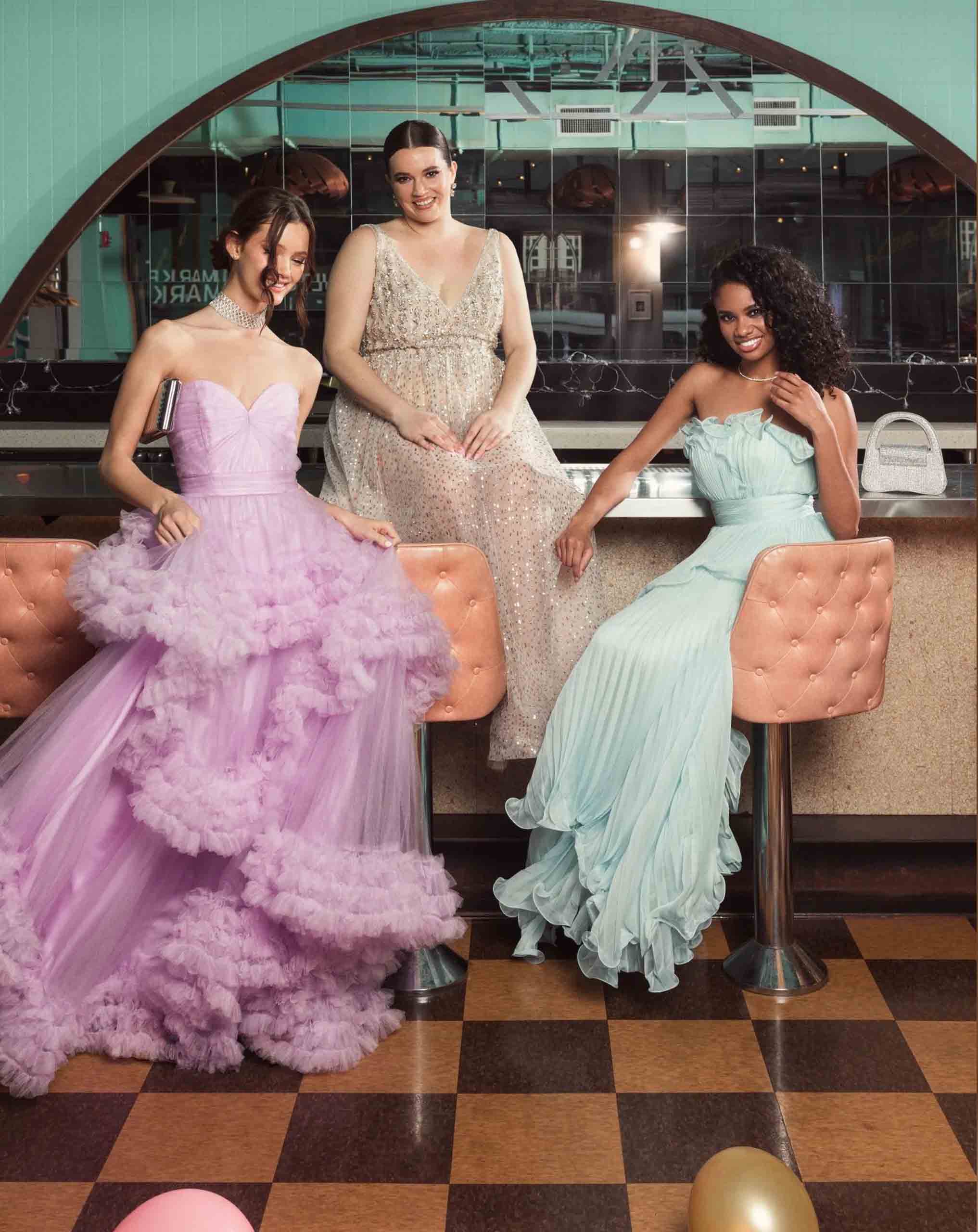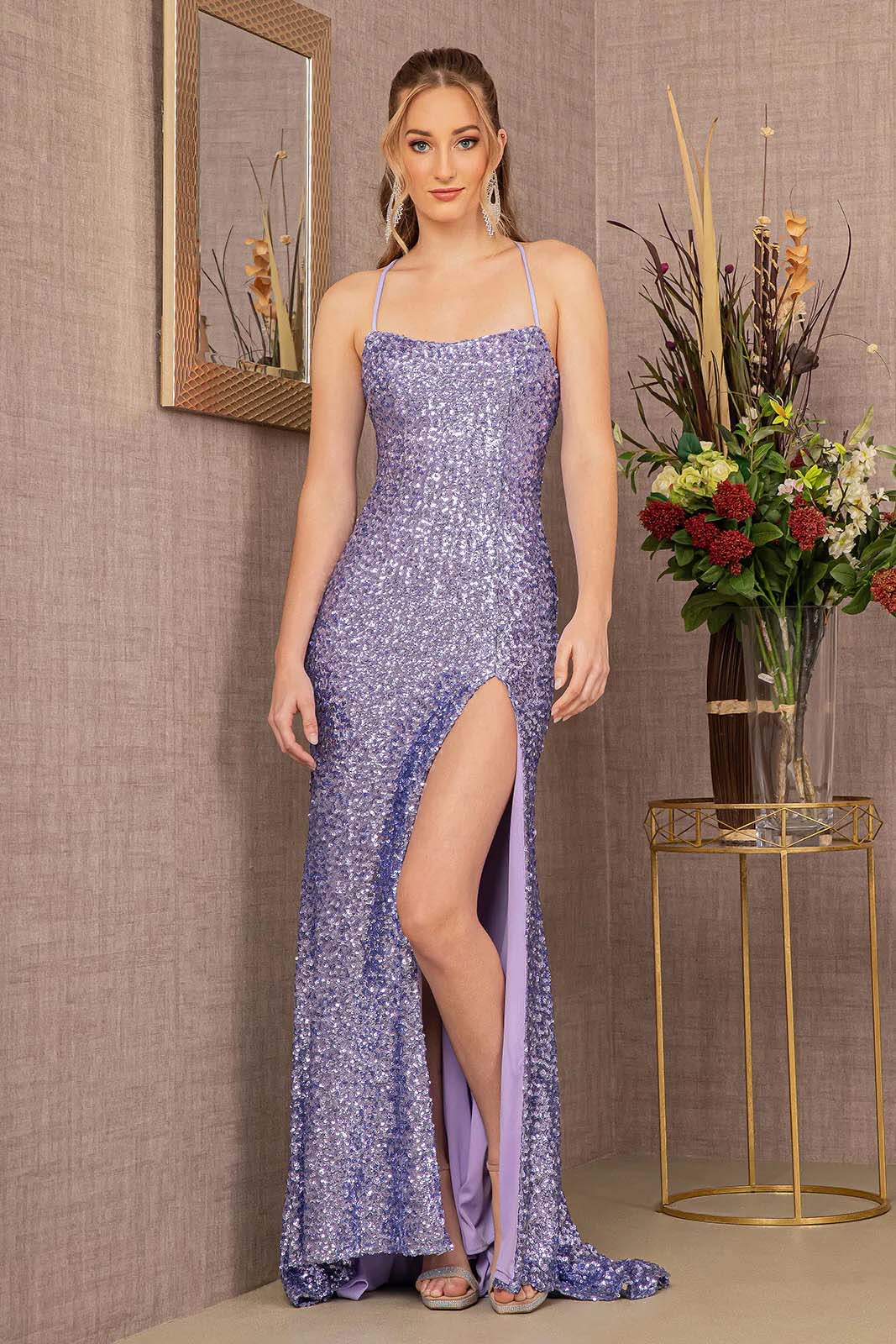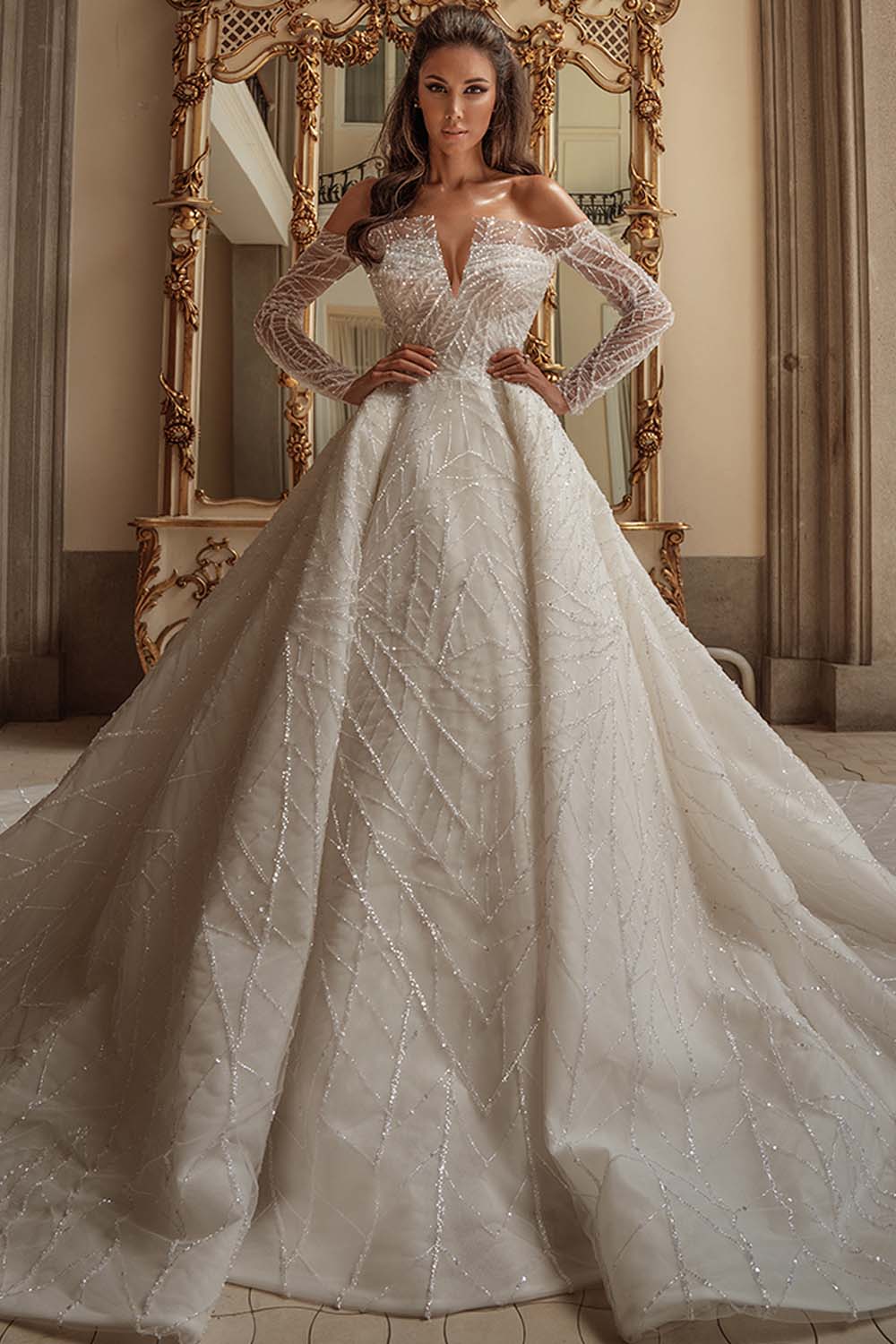The History of Party Dress
Many women, including celebrities, wear the same favourite party dress again and again. For others, any special occasion is an excuse for buying a new dress.
And why not? After all, everyone loves a good party, and dressing up is a big part of fun.
Whether you buy a new party dress online look for a sewing pattern to make your own, you will see many dresses with that retro look–usually with a modern twist. They are extremely popular, and for a very good reason: the dress changed over the centuries, but it was always a symbol of femininity.
From the 1920s beaded slip dress to an ultra-feminine fitted dress made of velvet, silk, or lace, these party dress styles still have a great appeal.
An elegant, shapely dress will emphasise your curves and make you feel look and feel like a lady. How to choose the best dress? You probably know already that if you choose the dress that is perfect for your skin tone and your body shape, you will look your best. Lifestyle blogs are full of that kind of advice. You must make sure that your dress is suitable for the occasion, too (what on earth is a “black tie optional”? dress codes can be so confusing!)
So why learn about the history of the party dress if choosing the right shape and style should be good enough? Good question.
Becoming a fashion connoisseur has many benefits. To start with, if you start hunting for vintage outfits, you’ll see what a piece is, and how much it is worth.
Online shopping will become easier, too. You will see a bigger picture and will be able to make more informed decisions. Understanding different clothing styles will help you choose the right accessories so the outfit won’t look too busy or mismatched.
Working out which accessories will look good usually includes a little guesswork on your part, doesn’t it? This is especially difficult when you are trying to accessorise a modern dress with a vintage twist or the contemporary version of original vintage design. Do you play the vintage look down or do you add accessories that will take the dress to a new level and make you stand out from the crowd? Or maybe something quirky for a change?
Let’s see what the history of the party dress can teach us about this beautiful and important part of women’s clothing.
The history of the party dress goes back very far. In the beginning, clothing was only used to protect the body from the cold while allowing free movement. The first clothing resembling a dress was probably very simple, without much attention paid to the aesthetics of the outfit.
The history of textiles reflects the history of the human race. As humans migrated to new lands and climates, they Settled cultures developed felted and spun fibers. Throughout the Neolithic and Bronze Ages, humans were cultivating flax, using woollen felt, silk, cotton, developing woven techniques.
We know that adorning the body is not the invention of our times. Figurines, paintings and artifacts show people using clothing and jewellery in ancient cultures. The quality of fabric and craftsmanship reflected the person’s social status and their wealth.
To understand the history of the party dress, we must start from showing how beauty canon has evolved over time. The feminine beauty ideal, which also includes body shape, varies across different cultures and is liked to fashion.
As society evolved, the concept of beauty in general, as well as perceptions of a woman’s “ideal” body, were changing, too. Women’s ideal body shapes varied from slender with narrow shoulders and high waist in Ancient Egypt, wide hips and pale skin in Ancient Greece, big bosom and a full body during the Italian Renaissance, hourglass body with a tiny waist - and a pale, frail look in Victorian England - those corsets!
In modern times, the changes were moving faster. The roaring twenties creates the new woman with her fashionable flapper wardrobe, designed for her flat-chested, boyish figure. In the 30s (the beginning of the Golden Age of Hollywood) the curves and hourglass figure with large breasts and a slim waist were back. This body shape was still considered perfect in the 40s and the 50s.
The 60s held up the thin, willowy, adolescent look as ideal. The 80s changed that as we admired supermodels with their athletic, curvaceous figures more. The healthier, fitter body was in vogue. The 90s brought another change: we still loved the curves but the ‘waif’ look was all the rage. The “perfect” women looked like a neglected undernourished child.
Not surprisingly, the number of cases of severe anorexia nervosa requiring hospital admission rose during the 1960s and 70s–and quite significantly.
So, how are the beauty ideals perceived now?
Well, we seem to understand that real women do not look like skinny models. At least, not all the women. Many clothing, cosmetic, and even toy companies changed their marketing strategies and promote body diversity and positive body images, for example creating Barbie dolls with curvy shapes, or designing a clothing line for plus-women.
If stands to reason that whenever perceptions of beauty “ideals” were changing, the fashion trends had to change, too.
Volumes have been written about the history of a dress. A party dress–a dress worn for a party–has its own history.
The most iconic look that never goes out of style is a little black dress. Decent, classic, sophisticated, you can dress it up or dress it down and it always looks good. Very few women look good in black so check alternatives before get one for yourself.
When you are shopping for a party dress, you may get confused seeing all the different names: one pretty dress is a party dress, another one is a cocktail dress, a formal dress–or semiformal. And then there is a tea dress, oh wait, there is more, isn’t there?
A gorgeous dress that seems perfect for a party may be also called an evening dress, or an evening gown. You can tell the difference between a lovely day or work dress and a party dress by the cut, choice of fabrics, patterns, embellishments and other elements of the design. They can vary from stylish and understated to flirty and funky.
Dress code changed over the years, and dresses worn for special occasions evolved. If you google “party dress” you’ll see anything from a long-sleeved, floor-length dress made of opulent velvet or lace to a sexy little number covered with sequins.
The tradition of wearing a special dress for special occasions has been around for centuries. Whether it was called a dinner dress, party dress, evening dress it was always designed to emphasise a woman’s feminine shape and beauty.
Naturally, the party dress design and style were always following the fashion trends of the era. The design and style of a party dress are closely related to those ideal beauty standards that women in our society are held to. If the ideal female body type was an hourglass, the dresses were fitted and emphasised the waist. If the “perfect” body was slim and boyish, flapper dresses - loose-fitting slipovers–were in vogue.
The concept of dressing for special occasions has existed for centuries, from exquisitely tailored and opulently adorned court dresses and ball gowns to a plethora of amazing styles that are available now.
Dress historians agree that evening dress history starts in the mid-1820s when wearing a gorgeous dress played an important role of dress and adornment as a mode of social positioning.
Dresses were often designed for specific occasions: there was the morning dress and the day dress, the promenade dress, and the ball dress.
During the next few decades, the shape of the dresses was changing from romantic, light and flowy, through a fitted hourglass or s-curve silhouette with fuller A-line or trumpet skirt.
A cocktail dress soon became a must-have piece in every woman’s wardrobe. As women we gaining more independence and freedom, they were seen more often in
One of the symbols of that independence was the flapper of the 1920s, living a lifestyle that shocked the Victorian morality of the older generation that valued traditional values. The flappers smoked and drunk alcohol in public, drove cars and danced a lot. The flappers hated anything that was restricting them including restrictive clothing. Corsets? Who needs them! No wonder the dresses got shorter, more comfortable embellished with beads, sequins, and fringes for special occasions.
In the 1930s cocktail party dresses–or social dresses - became longer than the dresses so popular in the 20s. A typical cocktail dress was ankle length or a bit shorter. Unlike sleeveless dresses that flippers loved so much, the cocktail dresses of the 30s had sleeves that made them more suitable for other occasions.
Wide leg pantsuit became a favourite choice as a cocktail attire, just like the palazzo pants that you can wear now even on the Red Carpet.
A cocktail dress was not the only special occasion style of the 30s. Women loved the feminine look and feel of floral chiffon dresses, especially in summer. It was a better choice for a summer garden party than an expensive cocktail dress.
In late 1930 the party dress style changed to a shorter version with a small waist and full skirt. With World War II people there were fewer occasions to wear evening gowns or dresses, and only when the war ended the party dress became popular again. The fitted style of 1940 was leaner, slimmer, and more sophisticated, even for special occasion dresses. They often included shoulder pads to make them more structured.
Those styles were still popular in the 1950s, and like the economy, after the war improved, the dresses were made of richer fabrics - silk, velvet, lace, or taffeta. Patterns, such as polka dots or florals became fashionable. The 1950s housewife was a keen hostess and a party or cocktail dress became every woman must-have.
The formal dress of the 1960s was shorter, simpler, boxier, less fitted, and often sleeveless, with a matching jacket. The silhouette with a full skirt was very popular, too.
When we think “vintage dress’, that is what we usually have in mind: that super-feminine dress with a full dress from the 40s or the 50s. Millennials love those vintage dresses, too, and search the Internet to learn how to get the 40s glam curls and waves.
The 1970s were more casual. From a hippie look to tailored chic, and from bold patterns to paisley, there were many styles to choose from. The freedom of choice followed the freedom of expression, with fewer people concerned about what the rich and famous were wearing.
The dresses ranged from the granny dress, prairie dress or peasant dress to draped sexy evening dresses made of gold lame or jersey. Halter necks were a popular element of the design for an evening dress.
In the 1980s, the influence of fashion designers, big clothing brands, and celebrities grew dramatically. Many women wanted to dress like Lady Diana or Alexis Colby from the TV show Dynasty. Party dresses varied a glamorous dress with ruffles made of shiny lamé to a hip mini dress Madonna-style.
Apart from the Dynasty look, simple slip dresses made of soft crepe became commonly wear for special occasions. Women became more independent in their thinking and were making their decisions based on what they like, not necessarily on what they were told to wear. More styles were acceptable, and the dress codes became less strict.
In the 2000s, we have been wearing anything from a baby-doll or bubble skirt to a classic cocktail dress. The party dresses you see in the shops come in many styles, and suit many body types and personalities, and occasions.
Obviously, women were wearing exquisitely constructed and intricately textured and embellished dresses since antiquity. Ancient Egyptians, especially nobility, wore beautiful clothes and jewellery made of precious metals and precious stones. Stunning and intricate ornaments such as bracelets, rings, necklaces that archeologists discover in many countries all the time, still inspire jewellery designers today.
Even in the Middle Ages, when a woman expected to look modest, the dresses were often adorned with decorated with embroidery, tablet weaving, or appliqued silks and coat or outer dresses close with beautiful brooches. Typically, the richness of adornments reflected the social status and affluence of the woman.
The Renaissance dress emphasised feminine beauty. It was often made of luxurious fabrics such as brocade or velvet and decorated with lace and embroidery. These dresses were designed to dance in, and they still inspire the fashion designers.
If you look at paintings that show Baroque and Rococo dresses - or watch costume movies about that period–you will notice they were big and fashion trends were mostly defined and followed by the monarchs and noble courts, who were the social class able to afford expensive attire. Clothing was often quite pretentious.
As the trendy fashion was designed to differentiate the nobles -who could afford those ornate outfits - from the lower classes, the special occasion dresses were made of expensive fabrics, like silk and velvet, and heavily embellished.
A new silhouette that was developed during this era included panniers, or wide hoops made of cane, whale bones and metal rods, and worn under the skirt; smaller for every day and wider for formal occasions. They were designed to accentuate the tiny waist and full hips (and for a very formal occasion, full meant panniers that would extend the skirt sideways over a meter each side).

The dresses were stunning but far from comfortable. Not to mention, wearing all those corsets and cages was not healthy at all.
No wonder that that trend did not last. A more natural silhouette became more fashionable, and most women embraced the new look.
As fashion evolved, the name and design of the dresses worn for special occasions were changing, too. Court dresses were opulent and worn with a train, veil and feathers. Dinner dress with sleeves or sleeveless has a low neck or high neck depending if they wore it for an informal or a formal dinner. Tea dress was less structured and made of lighter fabric.
Evening dress - or evening gown, a term that emerged in the late 18th century – if often floor-length but can be shorter depending on the occasion. They made it of rich fabrics such as silk, chiffon, velvet, or satin. Evening gown has a fitted body and a full skirt, and evening dress can be A-line or any other silhouette, for example, mermaid, trumpet or sheath. Wedding dresses are designed using the style typical for evening dresses and gowns.
A cocktail dress, the classic favourite, is shorter and less ornamented than a ball gown or those big evening dresses from the past. The first cocktail dresses were sometimes very formal still, but unlike ball gowns, they allowed movement.
Special occasion dresses changed during the 19th century quite a lot, evolving from simple lines to fuller skirts, with details of the design changing as they introduced new trends. The sleeves, necklines, another element of the style and accessories you would be with a party dress were changing from big to small, from slim to wide, and from understated to exaggerated – that make fashion fun, isn’t it?
Many party dresses now are very short and very revealing, especially the dresses worn to nightclubs. Some of them are strapless and body-hugging, some have tutu skirts, but they all made for fun. But we still love the elegant dress perfect for so many occasions.
The tradition of wearing a formal dress has been around for centuries. We wear them on special occasions and they make women look and feel special.
Many online stores sell dresses and fashion accessories that recreate the vintage-inspired style. You can find anything from a gorgeous beaded Deco dress or Golden Age of Hollywood style gown to vintage-inspired shoes and purses.
The classic fashion trends are back in style today. Some women shop net-a-porter like a pro, others feel overwhelmed and never know what to choose. There is something incredibly appealing and comforting about those nostalgic styles, why don’t you try them next time you need a new dress?


